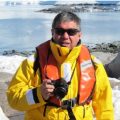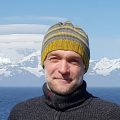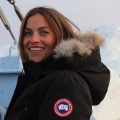- Project Background
- Project Partners
- Steering Group
- Reports
- Contact
Project Background
The four NAMMCO countries (Faroe Islands, Greenland, Iceland, and Norway) and Japan are exploiting some of the lesser-known species of baleen whales such as fin, minke, sei and Bryde’s whales, as well as pilot whales. The overarching ambition of the MINTAG project is to create a new satellite tracking tool that can generate data crucial to improving the management and conservation of these whale species and the marine ecosystems.
Knowledge of the migration routes of whales between areas where they spend much of their time provides important information for management. For example, understanding population structure and mixing is crucial for understanding the status of the species and individual stocks and determining what constitutes sustainable removals, either direct (hunt for communities utilising marine mammals) or undirect (by-catch, ship strike). Tag-based research can also provide information on key breeding, feeding and transit areas, which can help inform best protective measures, when needed.
This is a dream project for cetacean tagging experts who have longed for the necessary funding to develop a smaller type of tag and to be able to systematically test their performance and optimise deployment approaches. It is also a wonderful opportunity for collaboration between cetacean scientists across the North Atlantic and North Pacific.
The project is funded by NAMMCO, by the five participating countries directly, and by the six participating research institutes. Wildlife Computers, the chosen manufacturer, is also supporting the project. The total cost of the project has been estimated to close to 27 MNOK (EUR 6.4 million).
Project partners
The North Atlantic Marine Mammal Commission, NAMMCO, is the initiator of the project. Its 4 member countries (Faroe Islands, Greenland, Iceland, and Norway) are partners to the project, as well as Japan, represented by the Fisheries Agency of Japan (FAJ). Each country is represented in the Steering Group of the project by members of national research institutes. The NAMMCO Secretariat and the Fisheries Agency of Japan are also members of the Steering Group. The project is led by Professor Mads Peter Heide-Jørgensen from the Greenland Institute of Natural Resources, and administered by NAMMCO, through the NAMMCO Secretariat.
North Atlantic Marine Mammal Commission
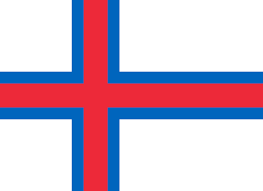
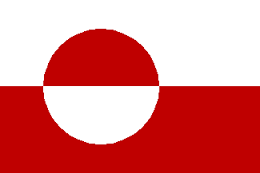
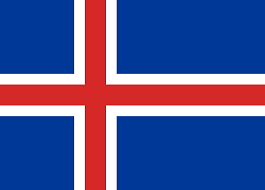
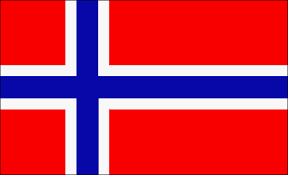
NAMMCO is an international regional body for cooperation on conservation, management and study of cetaceans (whales, dolphins and porpoises) and pinnipeds (seals and walruses) in the North Atlantic. Through regional cooperation, its member countries aim to strengthen and further develop effective conservation and management measures for marine mammals. Such measures should be based on the best available scientific evidence and user knowledge and take into account the complexity and vulnerability of the marine ecosystem.
The five Research Institutes engaged in the project are
- Faroe Islands: Faroe Marine Research Institute (FAMRI)
- Greenland: Greenland Institute of National resources (GINR)
- Iceland: Marine and Freshwater Institute (MFRI)
- Norway: Institute of Marine Research (IMR) and Norwegian Polar Institute (NPI)
The scientists involved in the MINTAG Steering Group are members of the NAMMCO Scientific Committee and have expertise in cetacean biologging.
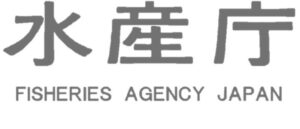
Fisheries Agency of Japan
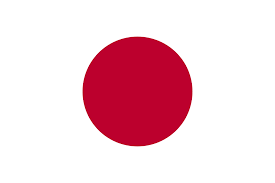
The Fisheries Agency of Japan (FAJ) is an agency of the Japanese Ministry of Agriculture, Forestry and Fisheries. It is responsible for the monitoring, management and conservation of live marine resources. As such it is the governing body for whaling and whale research in Japan. The FAJ is the parent organisation of the Institute of Cetacean Research (ICR), which is the research institute engaged in the MINTAG project.
The Institute of Cetacean Research (ICR) is a research institution founded in 1987 with the purpose of contributing to the sustainable utilisation of whales and its ecosystem through scientific research.
The scientists involved in the MINTAG Steering Group have expertise in cetacean biologging and population structure and are observers to the NAMMCO Scientific Committee.
Steering Group
Bjarni is head of the marine mammal section at the Faroe Marine Research Institute, with 25 years of experience in marine mammal research. Main research includes distribution, migration and abundance as well as feeding ecology and life history of marine mammals in Faroese waters. One main research field is biologging, where the main effort has been on tracking the pilot whales from Faroese waters.
Christian is a senior scientist at the Norwegian Polar Institute in Tromsø, Norway. He has worked with Arctic marine mammals for more than 40 years. Most of the work has been conducted in the Svalbard area. He has been involved in projects on a variety of aspects of the biology of the marine mammals in this area, including many studies that involves attaching various biologgers to seals, walruses and whale species.
Kenji Konishi received his PhD from Hokkaido University. He spent the early years of his career studying the biology of pinnipeds and their parasites from fish prey. After joining the Institute of Cetacean Research in 2002, he actively engaged in whale sampling, sighting, and tagging surveys in the North Pacific and the Antarctic. Kenji’s past research work includes studies on the diet, nutritional condition, and behaviour of baleen whales in both ocean basins. He also worked on the trend analyses of nutritional condition in the Antarctic minke whale with Norwegian colleagues and contributed to the Scientific Committee of the International Whaling Commission. Currently he is studying the diving behaviour, response to environmental changes and stock structure of blue, fin, sei, Bryde’s, common and Antarctic minke whales using satellite-monitored tags.
Luis A. Pastene is a Chilean marine biologist working currently as the Head of Science of the Institute of Cetacean Research (ICR) in Tokyo. Luis has field experience working with cetaceans (sighting surveys, biopsy sampling, photo-ID) in several oceans of the world. He is specialised in the analysis of population structure of baleen whale species in both Antarctic and western North Pacific, based on neutral genetic markers such as mitochondrial DNA sequences and microsatellite DNA. Luis has participated actively in the scientific committees or working groups of international organisations in charge of conservation and management of marine resources such as the International Whaling Commission (IWC), the North Atlantic Marine Mammal Commission (NAMMCO), and the Convention on the Conservation of Antarctic Marine Living Resources (CCAMLR). Luis considers that the outputs of the MINTAG project will assist enormously in the refinement of the hypotheses of movement and stock structure of baleen whales in the North Atlantic and North Pacific, proposed by genetic analyses.
Mads Peter is a professor at the Greenland Institute of Natural Resources with 40+ years of work experience with marine mammals in the Arctic. He pioneered in 1990s the technique with using an airgun for deploying satellite transmitters on large whales, and has since worked with developing several new and innovative techniques for tracking and collecting of biologging data from cetaceans.
Martin has extensive experience in marine mammal research. He has worked extensively with the development of innovative satellite instrumentation methods for the study of migratory patterns and ecophysiology in marine mammals, as well as instrumentation for collecting oceanographic data using marine mammals. Martin has also been involved in recent work using satellite tags and high-resolution dataloggers to study humpback and killer whales in Northern Norway and humpbacks and fin whales in the Southern Ocean. Since 2018, Martin has been employed at the Institute of Marine Research, within the marine mammal research group, and took over the leadership of the group in October 2021. He is responsible for population modelling and assessment of ice-breeding seals (harp and hooded seals), and currently co-chair the working group on harp and hooded seals (WGHARP) of the International Council of the Exploration of the Sea (ICES). He is a member of the NAMMCO (North Atlantic Marine Mammal Commission) Scientific Committee, and a national delegate to both NAMMCO and the International Whaling Commission.
Ryotaro Okazaki is the Assistant Director of the Fisheries Agency of Japan (FAJ). His work has involved multilateral fisheries negotiations, including those with the North Pacific Fisheries Commission (NPFC), WTO Fisheries Subsidies, and the International Whaling Commission (IWC). He holds two MSc degrees in the UK, one in Marine Policy and another in Fisheries Science.
In the MINTAG project, he primarily handles negotiations with domestic financial authorities, financial management, and coordination with domestic stakeholders, ensuring the smooth implementation of the project.
Sandra is a senior marine mammal expert at the Marine and Freshwater Research Institute of Iceland (since 2008), and head of Seal Research Department at the Icelandic Seal Center. She has a PhD in marine mammal population ecology. Sandra has been Principal Investigator of the harbour seal and grey seal population monitoring programs in Iceland since 2008, including bi-annual aerial population censuses, monitoring of pup production and management advice. She leads several research projects focusing on anthropogenic impacts on marine mammal populations due to effects of tourism and interactions with fishing industry, including behaviour studies, tagging of animals and dietary studies. Further, she has experience in interdisciplinary and transdisciplinary research working closely with stakeholders.
Nils is a scientist at the Norwegian Institute of Marine Research, Bergen, Norway. He is responsible for the whale survey program at the institute and the management of minke whales. Especially in that context the MINTAG program will be of importance to gain knowledge about the annual migrations and habitat use of minke whales.
Rikke’s research field is the temporal and spatial distribution and abundance of marine mammals, especially cetaceans, in Greenland. She works as a senior advisor at the Greenland Institute of Natural Resources (since 2007), leading research projects and developing long-term monitoring schemes relating to the abundance and distributions of cetaceans. Data from the MINTAG project on surfacing times at specific dates and times will be of great value when correcting abundance of baleen whales.
Lorem ipsum dolor sit amet, consectetur adipiscing elit. Ut elit tellus, luctus nec ullamcorper mattis, pulvinar dapibus leo.
Reports
Here you can read yearly reports on the progress of the project.
MINTAG Progress Report March 2023 – March 2024





